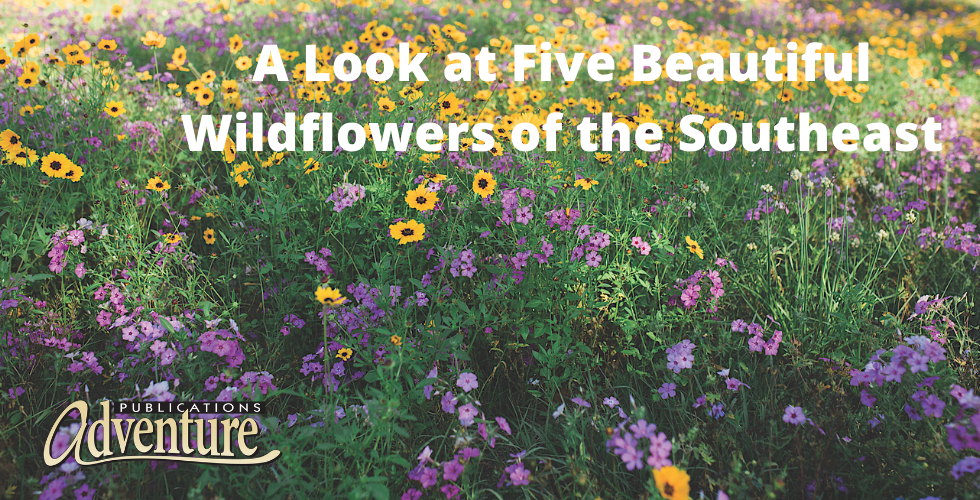
A Look at Five Beautiful Wildflowers of the Southeast
With Native Plant Gardening for Birds, Bees & Butterflies: Southeast, by acclaimed author and expert entomologist Jaret C. Daniels, you can plan your landscape to invite beloved backyard visitors to your garden. Today we take a look at five beautiful wildflowers of the Southeast.
Northern Spicebush
This attractive, multistemmed shrub is found in rich, moist woodlands. Plants have a rounded, open growth habit and can be quite ornamental. In early spring, the bare, speckled branches burst forth with a profusion of small yellow flower clusters. Although not showy, the fragrant blooms attract a variety of insect pollinators. They are quickly replaced by smooth, green leaves that are quite aromatic when crushed, providing this native with its distinctive name. Later in the season, female plants showcase a bounty of shiny red fruit, often against a backdrop of attractive, bright-yellow fall foliage.
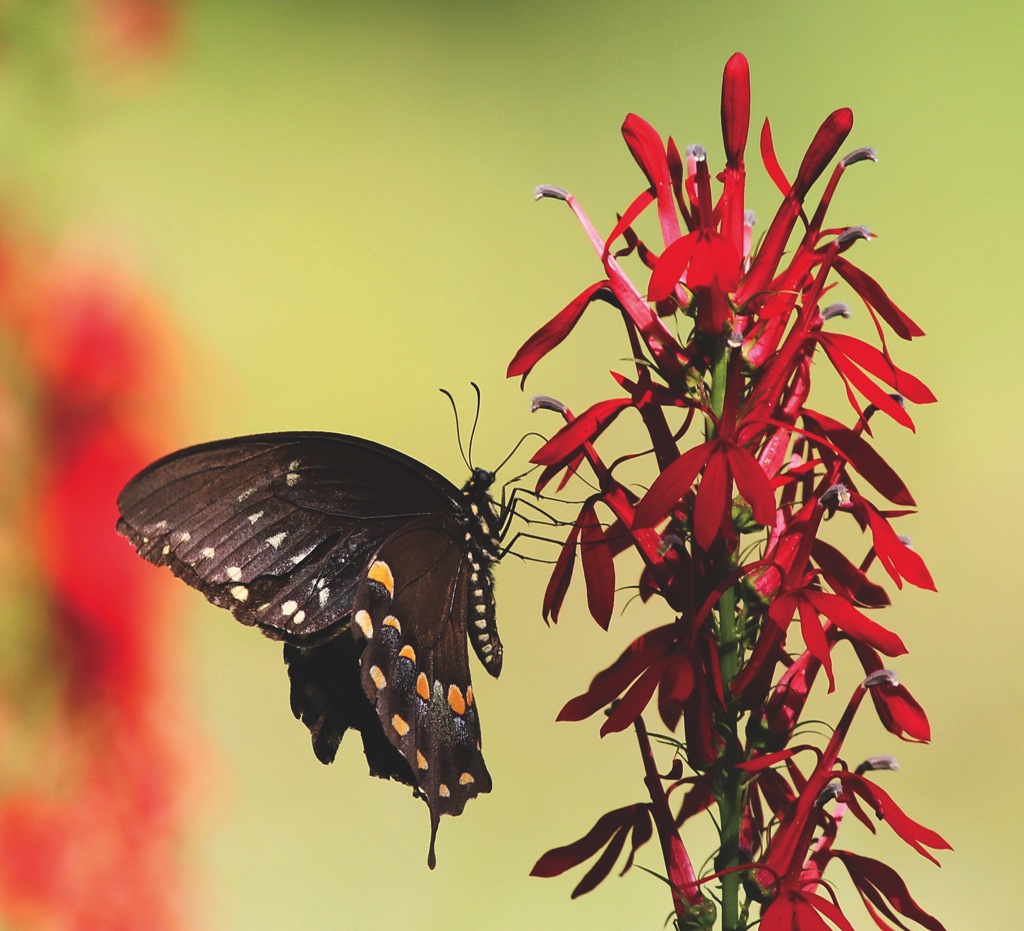
It attracts butterflies, bees, flies, and other pollinators. The small, oval fruits are readily consumed by hungry songbirds. It serves as a host plant for the spicebush swallowtail butterfly (Papilio troilus).
Obedient Plant
A showy and somewhat underused native, this is a plant of moist meadows, bogs, stream margins, and wetland borders. While an excellent addition to these natural landscapes, especially en masse, obedient plant is also easy to grow in rich garden soil with regular irrigation; it does not perform well in poor, dry soil and is relatively intolerant of drought. Mature plants tend to flop a bit and often require staking. It can spread somewhat aggressively by seed or underground rhizomes and may require some maintenance or division to keep in check. A late-season bloomer, it produces impressive spires of large, snapdragon-like flowers. Several commercial cultivars are available, including those that are more compact or flower in white.
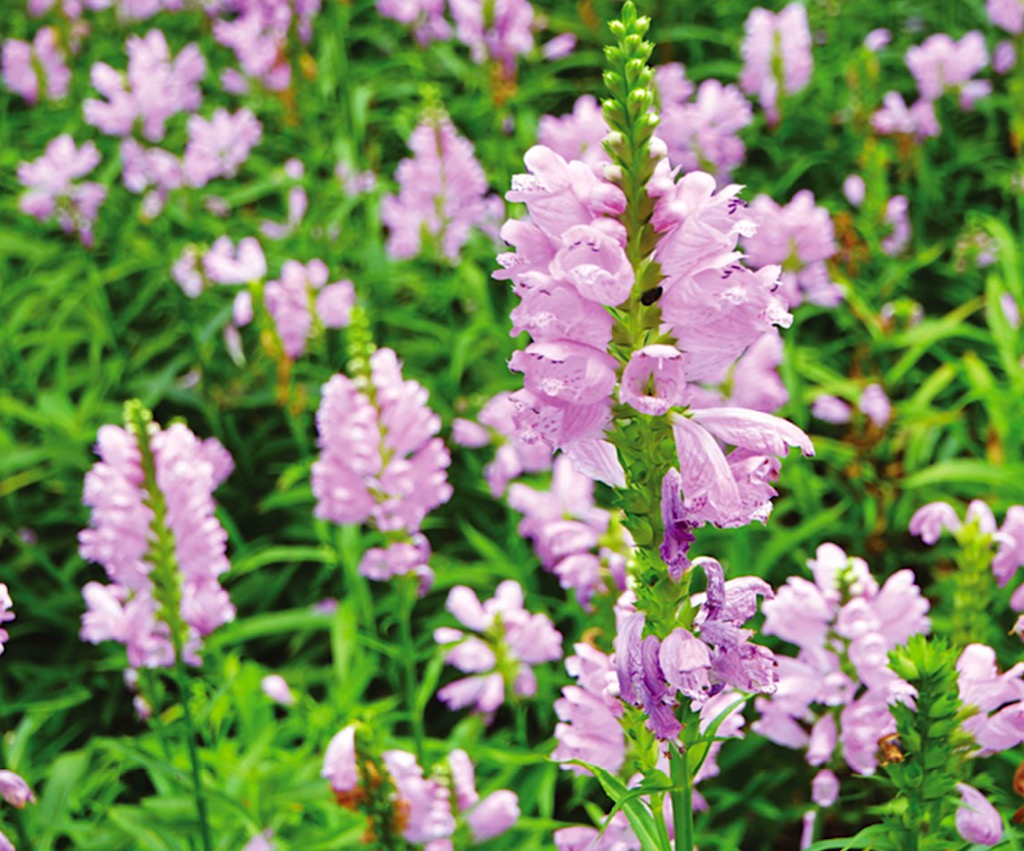
It attracts butterflies, sphinx moths, bees, and hummingbirds.
Pink Swamp Milkweed
This moisture-loving native is yet another landscape-worthy milkweed. It is common in marshes, wet roadside ditches, and moist prairies throughout the region. A graceful, branched perennial, pink swamp milkweed is an excellent addition to a water garden, sunny wetland margin, or any wet area of a yard. It also adds height and interest when incorporated in a container garden. The delicate blooms attract an array of insect pollinators. Easy to grow from seed, it requires little care once established and is one of the most commonly available milkweed species commercially. The popular cultivar ‘Ice Ballet’ has elegant, pure-white flowers and foliage in a somewhat darker green.
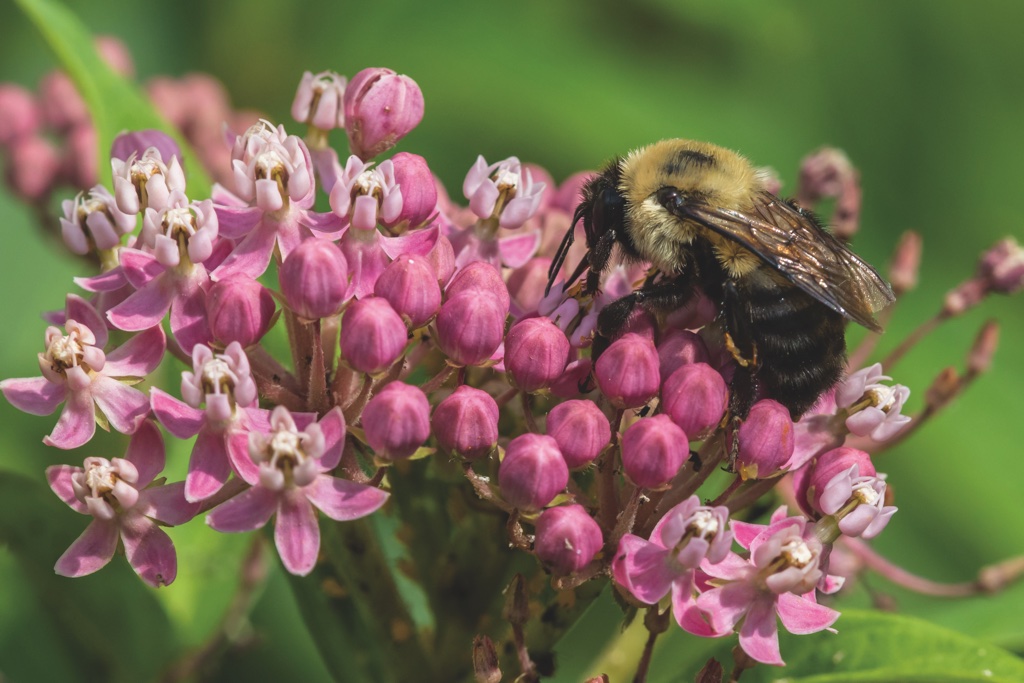
It attracts butterflies, bees, and other insect pollinators, as well as hummingbirds and serves as a larval host for monarch (Danaus plexippus), queen (Danaus gilippus), and soldier (Danaus eresimus) butterflies (the last one in Florida only).
Purple Passionflower
Purple passionflower is a must-have for any wildlife garden in the Southeast. This fast-growing, twining, spreading vine can be easily trained up a trellis or fence or grown as a groundcover. Highly ornamental, the vine features dark-green foliage and sizable, eye-catching, fringed flowers. It spreads by root suckers, forming small colonies. Also called maypop, plants produce a large, rounded fruit with edible pulp; a different species of passionflower, found in South America, is commercially grown for passion fruit.
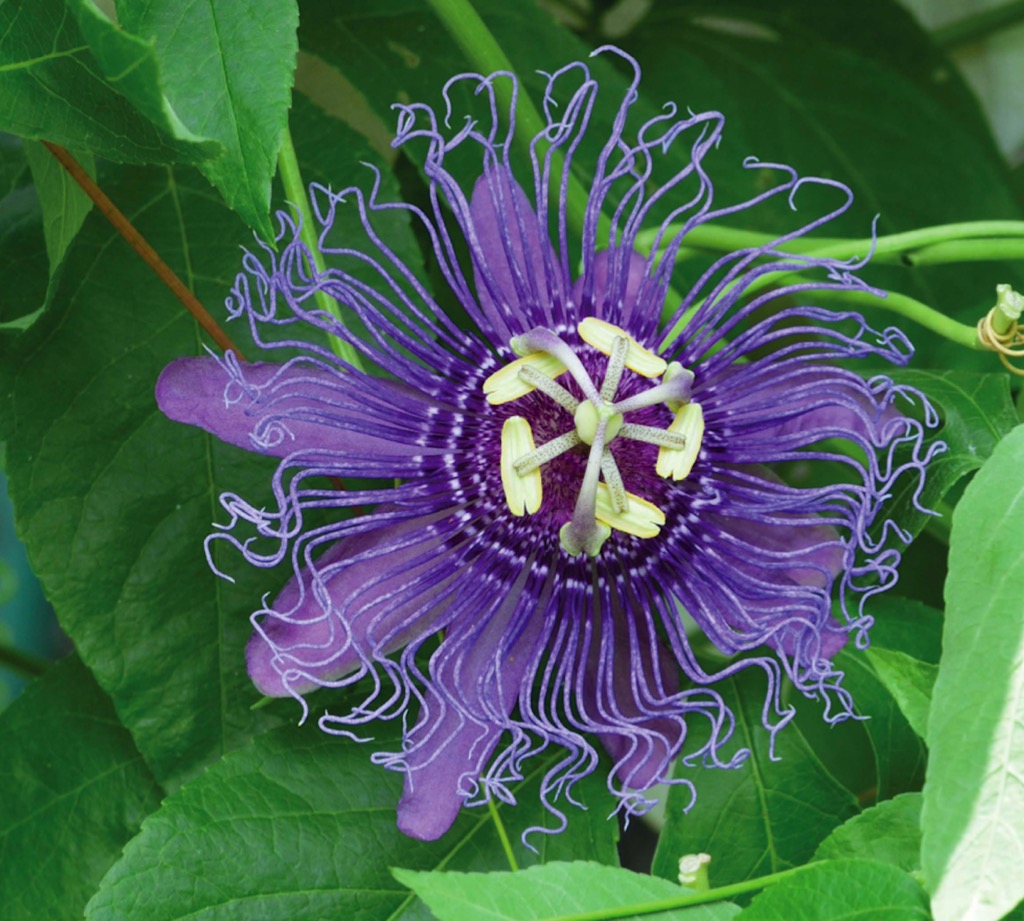
It attracts butterflies, bees, flies, and other insect pollinators and serves as a larval host for zebra longwing (Heliconius charithonia), gulf fritillary (Agraulis vanillae), and variegated fritillary (Euptoieta claudia) butterflies.
Partridge Pea
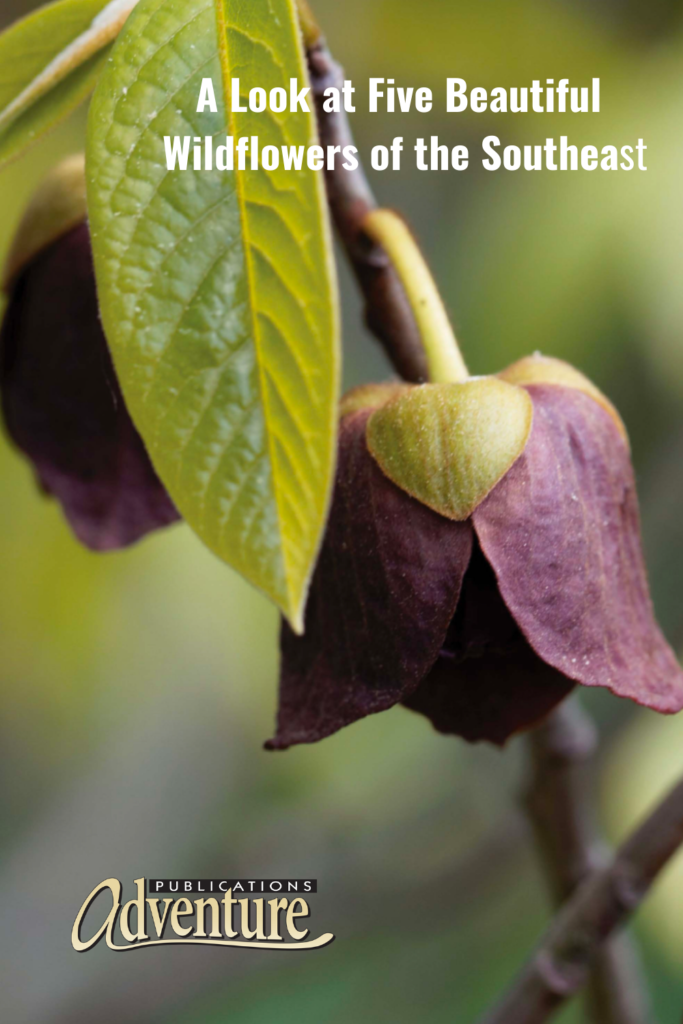
An early colonizer of open, disturbed sites, partridge pea offers tremendous wildlife value, and its beauty as a landscape plant is often underappreciated. This durable annual tolerates poor growing conditions, establishes rapidly, and helps fix atmospheric nitrogen into the soil; as a result, it is excellent for naturalizing larger areas and is frequently used to stabilize slopes and prevent erosion. Plants have an airy, fern-like appearance that adds soft texture to the landscape and cover for wildlife. Individual leaves are somewhat sensitive to touch and tend to close when disturbed; they also close up during the heat of the day to conserve moisture. The petioles possess nectar-producing glands (extrafloral nectaries). The plants produce copious amounts of seed and freely self-sow.
It attracts ants, wasps, and other highly beneficial insects; the showy yellow flowers are particularly attractive to bees. The seed is an important food source for many songbirds, turkeys, quail, and ducks, as well as small mammals. Several butterflies, including the gray hairstreak (Strymon melinus), cloudless sulphur (Phoebis sennae), little yellow (Pyrisitia lisa), and ceraunus blue (Hemiargus ceraunus), use the plant as a larval host.
About the author: Jaret C. Daniels, Ph.D., is an Associate Professor of Entomology at the University of Florida and Director of the McGuire Center for Lepidoptera and Biodiversity at the Florida Museum of Natural History, specializing in insect ecology and conservation. He has authored numerous scientific papers, popular articles, and books on wildlife conservation, insects, and butterflies, including butterfly field guides for Florida, Georgia, the Carolinas, Ohio, and Michigan.
Native Plant Gardening for Birds, Bees & Butterflies: Southeast is part of the AdventureKEEN Nature-Friendly Gardens series, which includes Native Plant Gardening for Birds, Bees & Butterflies: Upper Midwest, and Native Plant Gardening for Birds, Bees & Butterflies: Southwest. Early November 2021, Native Plant Gardening for Birds, Bees & Butterflies: South and Native Plant Gardening for Birds, Bees & Butterflies: Southern California will join the series.
Jaret is also the author of Vibrant Butterflies: Our Favorite Visitors to Flowers and Gardens; Backyard Bugs: An Identification Guide to Common Insects, Spiders, and More; and Our Love of Bees. Jaret currently lives in Gainesville, Florida, with his wife, Stephanie.
Order your copy of Native Plant Gardening for Birds, Bees & Butterflies: Southeast now. If you enjoyed this blog about the wildflowers of the Southeast, sign up for our newsletter here!


